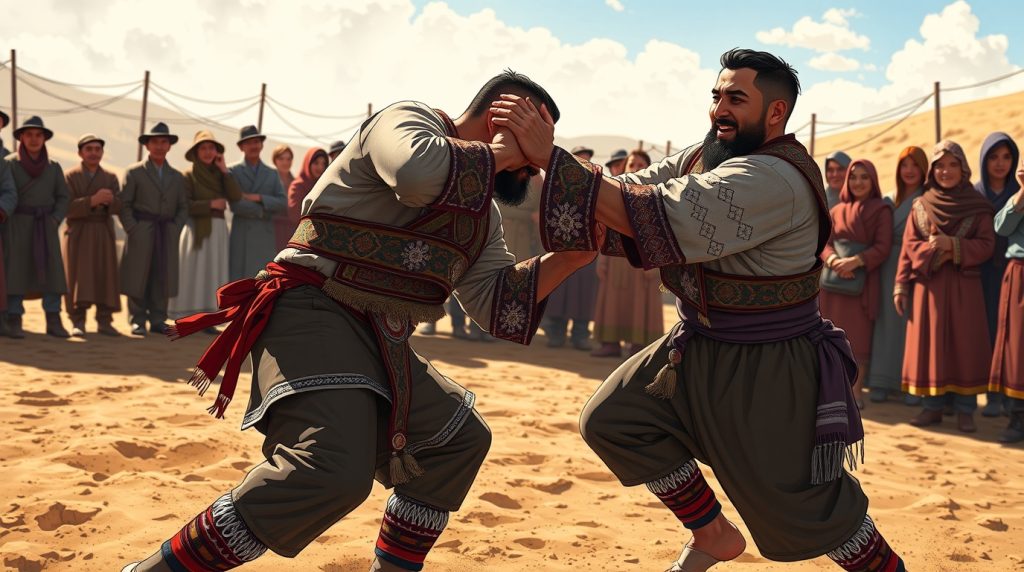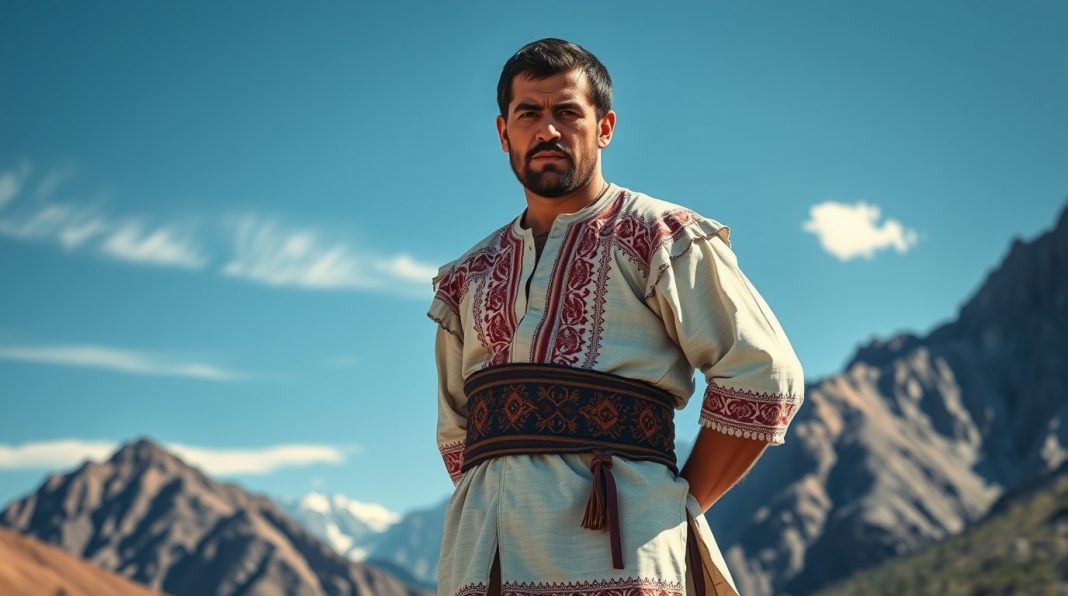Explore Kokh, the ancient Armenian martial art of courage and honor. Discover its roots in the rugged Armenian Highlands, its ancient warrior traditions, and how this centuries-old wrestling style continues to shape Armenia’s national spirit today.
The Birthplace of Kokh: The Armenian Highlands
Long before judo, sambo, or Greco-Roman wrestling existed, the Armenian Highlands — a vast mountainous region rich with valleys, rivers, and ancient fortresses — gave rise to a unique fighting tradition known as Kokh.
The Highlands forged a strong, independent people who had to fight for survival across centuries of invasion. Kokh was born in these mountains as both a sport and a form of warrior conditioning. It trained young men to endure, to stay balanced on rough ground, and to develop the mental toughness needed for battle.
Archaeologists have discovered rock carvings and ancient murals showing Kokh-like wrestling scenes dating back over 3,000 years, some even from the time of the Urartu Kingdom (9th century BC). These depictions suggest Kokh wasn’t just recreation — it was a sacred tradition, possibly tied to ancient rituals celebrating strength and fertility.

Kokh and Armenian Warrior Culture
In traditional Armenia, every village had its own Kokh champions — men known not only for their strength, but for their discipline and fairness. To throw an opponent cleanly was a matter of honor, and to use trickery was considered disgraceful.
Fighters were expected to control their emotions, to fight with courage, and to respect their opponent regardless of the outcome. This moral foundation made Kokh a reflection of the Armenian warrior code — courage, dignity, and self-control.
The art was deeply tied to community life. During weddings or national holidays, Kokh matches were held as both celebration and test of manhood. The winner often dedicated his victory to his family or village, strengthening social bonds.
Two Distinct Styles: Mountain and Valley Kokh
Over time, two main versions developed:
- Mountain Kokh (Lerrnakan Kokh):
Practiced by the rugged mountain tribes, this form was fast and brutal. Fighters wore thick sashes and could use limited open-hand strikes and foot sweeps before engaging in throws. It trained reflexes for real combat — much like military close-quarters training. - Valley Kokh (Dazhotni Kokh):
Practiced in the plains and villages, this was a more ceremonial and sporting version. Fighters used only throws and grappling, and matches followed traditional music and cheering. It was performed at festivals as a dance of balance, strength, and respect.
Both versions emphasized balance, timing, and fair play — no ground fighting, no stalling, only decisive throws.

Techniques and Training Methods
Kokh training focused on power from the hips and legs, balance control, and precision throws. Common techniques included:
- Ghuk (hip throw)
- Tarnum (lift and sweep)
- Zvartel (spin throw)
- Khaghagh (peaceful throw — performed gently during ceremony matches)
Training was traditionally done outdoors — on grass, dirt, or snow — which toughened the body and taught fighters to move on any surface. Elders often acted as judges, ensuring no dishonorable tactics were used.
Many Kokh masters believed that true power came from calmness, not anger. “A warrior who loses his temper loses his balance,” said one old proverb.
Kokh in Modern Armenia
Though Soviet rule suppressed many national traditions, Kokh never completely disappeared. In the 20th century, it quietly survived in rural festivals and family gatherings. After Armenia’s independence in 1991, martial arts enthusiasts began to revive Kokh as a national treasure.
Today, Kokh has official tournaments, youth programs, and even international recognition as one of the world’s oldest indigenous wrestling arts. It’s practiced in cultural festivals and integrated into judo and sambo training.
Some modern fighters use Kokh techniques in MMA and grappling, crediting it for their sense of balance and explosive power. The Armenian Ministry of Sport and Youth Affairs now supports Kokh as part of national heritage preservation.

Spiritual Meaning and Cultural Symbolism
To many Armenians, Kokh represents more than fighting — it’s a spiritual connection to their ancestors. Each grip, throw, and stance reflects centuries of struggle and pride.
The art also mirrors the Armenian worldview — the belief that strength and mercy must exist together. Victory in Kokh is not about humiliation but about demonstrating mastery with humility.
When two wrestlers bow, grip each other’s belts, and begin their match, they’re not just competing. They’re honoring thousands of years of endurance, faith, and unity in the shadow of the Armenian mountains.
The Legacy Lives On
Kokh remains a proud symbol of Armenian resilience. It bridges the gap between ancient warriors and modern athletes — a reminder that true martial arts aren’t only about winning, but about understanding the spirit of one’s people.
As long as Armenians gather in their villages to wrestle, laugh, and celebrate under the mountain sun, Kokh will live on — undefeated by time.


